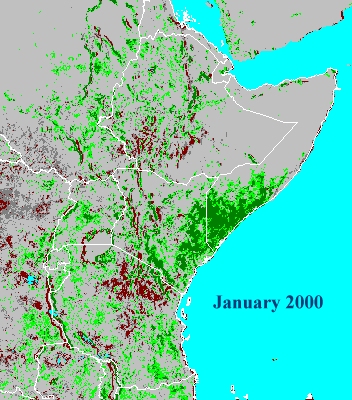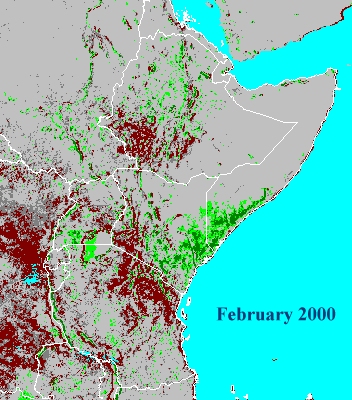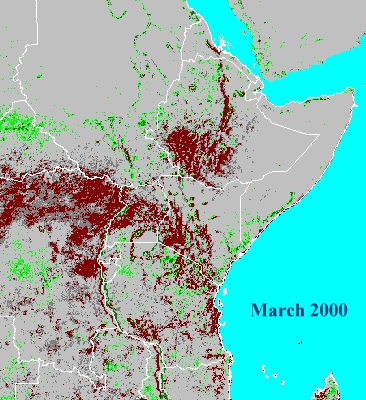


Reports are increasing of renewed drought in eastern Africa particularly affecting areas of southern Ethiopia, southern Somalia and eastern Kenya. Once again the livelihoods of the pastoral communities will be affected and their livestock, on which they are heavily dependent, could be at risk not only from drought but also from a resurgence of epidemic diseases. Particular concern at this time relates to rinderpest, given that the rinderpest status of the southern Somali ecosystem is largely undefined. In the past, droughts in eastern Africa seem to have been a precipitating factor in causing rinderpest to flare up in stressed cattle and wildlife populations. This is presumably because drought causes extensive migration of pastoral herds in search of the scarce water and grazing available and the resulting livestock congregations provide ideal conditions for virus transmission. Thus, the scene could be set for a recapitulation of the events which started in 1992/93 leading to the infestation by rinderpest of Tsavo National Park in 1994, spreading eventually to Nairobi National Park, Kajiado and northern Tanzania in 1996.
After this episode, coordinated interventions by the Governments of Kenya and the United Republic of Tanzania succeeded in reversing the spread of rinderpest to the point where declarations of provisional freedom from rinderpest were possible for the whole of Tanzania and a large zone of Kenya.
If a recapitulation of the earlier events is occurring now, or does so in the near future, it will be a severe test of Kenya's defences which include maintenance of a vaccinated buffer zone in the east of the country. The need for vigilance in this highly vulnerable area is of paramount importance and merits support. Fortunately, the Kenyan Department of Veterinary Services, OUA-IBAR and the EC joined forces under the PARC programme to organize cattle vaccination programmes using the private sector and non-governmental organizations (NGOs) against rinderpest at Garissa and in Coast Province.
The maps illustrate progressive drying of the pastures in eastern Africa, particularly in Ethiopia, Kenya and Somalia. NDVI values obtained by remote sensing, expressed as the difference between monthly values and the monthly mean of the last 15 years, are shown as coloured pixels on the map. Areas shown as red/brown or dark grey are drier than normal.
 |
 |
 |
 |
 |